This is a Watson 35mm scale focus folding pocket camera made by Welta-Kamera-Werk based out of Freital, Germany. The Watson was an export variant of the Welta Welti which is a very similar camera. Although the Welti/Watson line of cameras were not high end, they were not low end either. The Watson was made with an aluminum body that resists rust, and came with well built Compur shutters and a variety of high quality lenses. Although not easy to find, when they do show up, most of them still work as good as the day they were built.
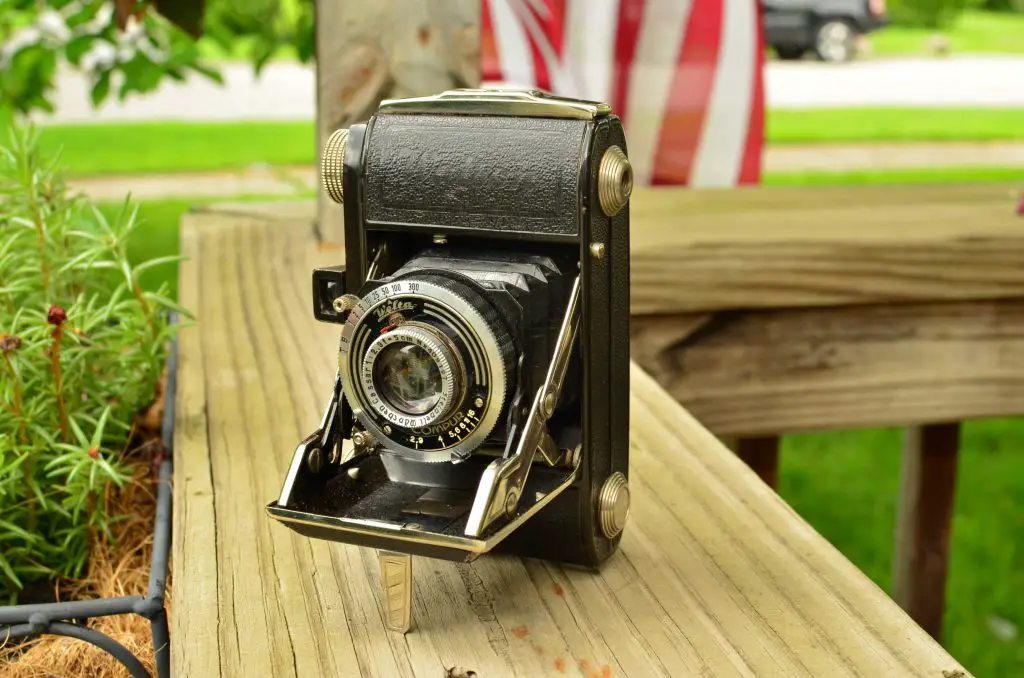 Film Type: 135 (35mm)
Film Type: 135 (35mm)
Lens: 5cm f/2.9 uncoated Steinheil Munchen Cassar 3-elements
Focus: 3 feet to Infinity
Viewfinder: Scale Focus
Shutter: Compur Leaf
Speeds: T, B, 1 – 1/300 seconds
Exposure Meter: None
Battery: None
Flash Mount: None
Weight: 512 grams
Manual: http://www.cameramanuals.org/pdf_files/welti_i.pdf
How these ratings work |
On one hand, the Welta Watson is an example of a typical 1930s German folding camera, but on the other hand, it is a 1930s German folding camera which is always a good thing in my book! These cameras have a look that didn’t exist after the war. While there isn’t anything specific about this camera that would make me recommend it over one of the other many cameras of it’s era, if you can find one in good working order, there’s no reason to pass it up. It is a well built and compact camera that often has good shutters and lenses, plus it has an early version of parallax correction which was pretty new at the time. | ||||||
| Images | Handling | Features | Viewfinder | Feel & Beauty | History | Age | |
| 1 | 1 | 0 | 1 | 2 | 0 | 40% | |
| Bonus | none | ||||||
| Final Score | 7.0 | ||||||
History:
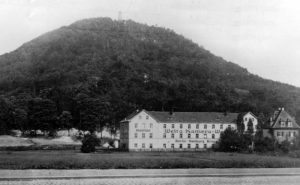
Welta is yet another camera company from the Dresden area of Germany. Founded in Freital, which is a suburb of Dresden, this area of the country was home to a variety of camera marques in the early part of the 20th century. Originally founded as Weeka-Kamera-Werk in 1914, the company changed it’s name to Welta-Kamera-Werk in 1919 to include the name Welta which was taken from their early plate cameras.
Welta was primarily known as makers of medium priced folding roll film cameras in the 20s and 30s. Their designs were neither top of the line or entry level. They jumped into the 35mm market in the mid 30s around the same time Kodak released the first Retina camera. Their designs were very similar in both design and functionality to Balda and Certo who were two other Dresden based German camera manufacturers.
Dresden is in the area of Germany that would become East Germany after World War II, and like other companies in the area, they would all fall under the control of Soviet leadership after the war.
After the war, Welta would be a state-owned company known as VEB Welta-Kamera-Werk. They continued to manufacture cameras using their own designs from before the war. Throughout the 1950s, Welta would merge with several other companies and eventually Pentacon in 1964. After this time, the Welta name completely disappeared from the market.
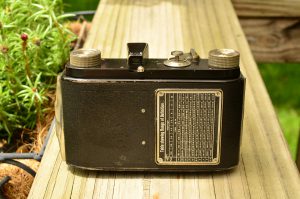
The Welta Watson is one of three pre-war variants of the Welta Welti that went on sale around 1938. I couldn’t find a lot of information about the Watson, but as best as I can tell, it was an export model only with English markings. I have only been able to find information about the Watson being sold in the US by camera distributors in Chicago and New York, but I am not sure if the Watson was exported to other English speaking nations.
There were two other variants of the Welti, called the Weltix, and Weltini. The Weltix was the lowest cost version of the Welti. Built with a stamped metal body instead of aluminum like on the other variants, it also had front element focus only since it did not have any type of focus helicoid like the Welti and Weltini. The Weltini was the rangefinder model that was produced before WWII. After the war, the Weltini continued to be offered, but it’s name was changed to Welti I. The Welti I was in production until 1950, at which time it was replaced by a newer model called the Welti Ic which continued into the 1960s.
The Welti and it’s 3 variants went through several subtle design changes throughout their production runs. Early versions of the Watson and Weltini did not have a top plate shutter release, and did not have an accessory shoe. At some point during it’s life cycle, these features were added. The copy in my collection does have the top plate shutter release, but does not have an accessory shoe, and uses front element focus.

Identifying differences between the Welti, Weltix, and Watson can be tricky since they all look very similar and several of the identifying features changed throughout their production runs. A late model Watson can look exactly like a Welti and vice versa. Furthermore, the only marking that identifies the model is the embossed logo in the leather. If this leather is damaged or missing, accurately identifying the model could be impossible. The two things that were consistent between all cameras was the general shape and size, and the viewfinder that offered parallax correction via a lever that would tilt the viewfinder for closeup shots.
The Watson has a similar shape and size to that of a roll film camera. In the 1930s, Welta had several other 127 and 120 roll film cameras that were all pretty similar in size and shape. It would not be unreasonable for someone not familiar with this camera to assume it was a roll film camera, and not capable of using 35mm cartridges.
Today, Welta cameras are grouped together with other Dresden area German camera makers as collectible pieces of history from forgotten brands. As I’ve said a couple of times, their models were neither bottom or top of the line, but like other things of the era, they were built to last and if you can find one in reasonably good shape, there’s no reason that with a little bit of cleaning, these wonderful and compact cameras shouldn’t be able to continue to produce great pictures!
My Thoughts
I really like the look of these pre-war German 35mm cameras. The Certo Dollina II is one of my favorite cameras in my collection. I love the look of the black leather and nickel patina combination on these cameras. They’re also very compact. I find it funny that early Kodak folding cameras were considered “pocket” cameras, when in reality they wouldn’t easily fit into a pocket of any modern article of clothing. These folding 35mm German cameras are truly pocket cameras and would fit into the front pocket on a pair of jeans.
Like my Certo, this Welta was an impulse buy from a seller who didn’t know much about it. Frankly, most of the cameras in my collection are “impulse” buys from sellers who don’t know much about them. Unlike the Certo however, the Welta seemed to work perfectly as soon as I got it. The shutter fired consistently and the speeds sounded good to the ear. All it needed was a gentle wipe down and a small amount of cleaning with a Q-tip. Even the viewfinder was relatively clean.
 This camera body doesn’t seem to have any type of serial number that I could use to date the camera, but there are serial numbers on both the front lens element and the Compur shutter. Unlike my Certo which has a Schneider Kreuznach lens that is easily dated, I couldn’t find any date information about the Steinheil Munchen lens on the Welta. I had a little bit of luck finding some info about Compur shutter serial numbers, but the odd thing is that according to this page (along with others I found) the Compur shutter should have 7 digits, but mine only has 6. It is possible one of digits was covered up, but it just doesn’t look like that to me.
This camera body doesn’t seem to have any type of serial number that I could use to date the camera, but there are serial numbers on both the front lens element and the Compur shutter. Unlike my Certo which has a Schneider Kreuznach lens that is easily dated, I couldn’t find any date information about the Steinheil Munchen lens on the Welta. I had a little bit of luck finding some info about Compur shutter serial numbers, but the odd thing is that according to this page (along with others I found) the Compur shutter should have 7 digits, but mine only has 6. It is possible one of digits was covered up, but it just doesn’t look like that to me.
Dating the camera by either of the two serial numbers was a bust. My only other option was research about the Watson itself. Mike Butkus’ excellent camera manual site also has some old camera catalogs and in there is a catalog for a Chicago based company called Burke & James who were both a maker and importer of cameras from all around the world. On page 11 of their 1938 catalog is an advertisement for a Welta Watson 35 camera so I know for sure that the Watson was available at least as early as 1938, but otherwise I could not find any additional information about when my camera would have been made.
After cleaning up the camera as best as I could, it was time to take it out and shoot a roll of film in it. As usual, I loaded in some basic Kodak Max 400 film and went shooting.
My Results
I said in my Certo Dollina review that the closest camera I have in terms of operation, is the Argus C3, and some of that holds true here too. Unlike the Certo and Argus, the Watson is a scale focus camera and has no rangefinder, but like both of them, the film advance is not coupled to the shutter, so you must advance the film and cock the shutter in two separate motions. Like the Argus, but not the Certo, the Watson’s shutter release is on the top plate of the camera, the Dollina is on the shutter itself. Finally, like the Certo, the Watson folds into a compact shape that can easily fit into a pocket, whereas the Argus is literally the shape of a brick.
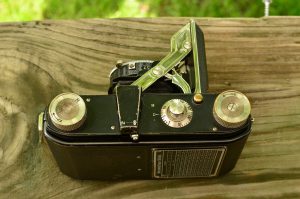
I’ve said it before, but it’s worth repeating here. You must remember to advance the film after every shot, otherwise you risk double exposing your next shot. If you do not do this consistently, you risk confusing yourself, and possibly double advancing the film if you can’t remember if you did it already. It’s better to waste a blank exposure and double advance it if you cannot remember, than ruin your previous shot by double exposing it.
I used to think that scale focus would be incredibly difficult to use. Due to my incredibly poor vision, I have no depth perception, so I’ve never really had to judge distances with any level of accuracy before.
When I shot with my first scale focus camera, I tried to stick to shots that only involved setting the lens to infinity. This is definitely the easiest way because at infinity, anything over 100 feet away is going to be in focus. It’s when you get closer to that, where you have to be right.
It is easier to shoot a scale focus camera outside in well lit areas, because you can use a smaller aperture which gives you a wider depth of field. In a nutshell, when shooting with a camera at something like f/8 or f/11, the distance to where something is too close, and too far away is greater, so that “sweet spot” is a lot bigger. When trying to shoot indoors, or in poor lighting, you have to use a larger aperture size like f/2 or f/3.5 where your “sweet spot” is much smaller, thus it is a lot more important to get the focus right. When shooting outdoors with a scale focus camera, if you use a small aperture, your estimation of distance doesn’t have to be as accurate.
When shooting things outdoors with a small aperture with a large depth of field, sometimes it helps to have a reference for distance. For me, I have an easier time relating to a familiar object that is 6, 10, or 15 feet long, than it is imagine the actual distance in my head.
- Many scale focus cameras have a minimum focus of about 3 feet. The average length of an average sized human arm from shoulder to the tips of the fingers is just under 3 feet, so if I am shooting something close up, I will stick out my arm and make sure the object is just beyond my reach and then I set the camera to 3′ and that should be good enough.
- I am 5’10”, so basically 2 inches short of 6 feet. When I am shooting an object that is about 6 feet away, I set the camera to 6′ and try to imagine myself laying on the ground in between the camera and the object I wish to focus on.
- A basketball hoop is 10 feet tall, so I try to imagine the height of a basketball hoop laying on it’s side when shooting something 10′ away.
- A Honda Accord is 189 inches long, which is just a little over 15 feet, so I try to imagine a midsize car’s length in between me and an object when setting the camera to 15′.
In each of these 3 cases, if you are shooting outdoors with a small aperture, you don’t need to get it exact. As long as you’re close, you will be fine. If your object is a little bit farther away than the length of a midsize car, then just move the focus to about 20′ or 25′ and you’ll be fine.
So, now that you feel comfortable guesstimating distances with a scale focus camera, you have to assume the camera will live up to it’s end of the bargain and actually get the focus right, which sadly, didn’t happen here.
I guess I shouldn’t be so hard on this camera. It is nearly 80 years old after all, and who knows how long it sat unused before I got my hands on it. The shutter does work. In every example, the exposure came out OK. It is the focusing that must be off. I will have to collimate the lens and try to get it more on spot. If the only images that were out of focus were the closeup ones, I would think I made poor decisions, but the three of the baseball field were intentionally set to Infinity, and none of them came out sharp.
I was not able to find a lot of info about the Steinheil Munchen Cassar lens, but I would have expected it to perform at least as good as the Schneider Radionar on my Certo. This could just be a soft lens, but comparing the 8 shots above, the one of my dad in the Blackhawks shirt came out reasonably sharp so I don’t think it is unrealistic to expect the rest of the shots to be sharper.
As for the light leaks, I don’t really know where to start. This is a bellows camera, so it is very possible there are some pinholes in the leather, but if that’s the case, it is not worth it to me to have this professionally restored. I’ll just leave it be and try to be more careful when shooting in bright light.
In any case, it is not all lost. This is a nice looking camera that works OK. It is fun to use and takes very vintage-y looking pictures, and if I can get the focus to be more accurate at infinity, the rest of the measurements should line up as well. I am curious to see images made with a Watson with either of the Zeiss or Xenon lenses, but I’ll probably never know.
Update 10/5/2015
I finally got around to taking apart this camera and looking at the focus. As it turns out, the focus was definitely out of alignment. I collimated the lens with a homemade piece of ground glass on the focal plane and found that infinity focus was out of alignment by about a 1/10th of a turn of the lens (that’s a lot).
I adjusted the focus to be perfect at infinity and put the camera back together. I haven’t yet shot with the camera, and I haven’t addressed the light leaks yet, but I plan on doing both in the coming months, so I would expect there to be life left in this old gal still! 🙂
Additional Resources
http://camerapedia.wikia.com/wiki/Welti
http://photo.net/classic-cameras-forum/00MEj4
http://camera-wiki.org/wiki/Welta
https://sites.google.com/site/fromthefocalplanetoinfinity/weltix


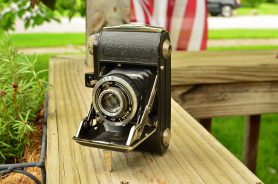








The Burke & James ad shows it. “Watson” was a name used by B&J on many of their varied and diverse camera types over the years.
Welta, it seems, made cameras for Burke & James, Chicago, and this one got the Watson name attached to it.
I have the exact camera as yours, labeled just Welta, and dating my Compur shutter, it was made in 1936.
The Watson in the B&J ad from 1938, shows a slightly different model, with a shutter mounted shutter release, rather than the top plate mounted release button. ( I also have one of these ad models….. with a Weltar Anastigmat 2.9, 5cm, Welta-Freital….. with Watson embossed in the upper front leather. A slightly cheaper model, but still quite nice )
Thanks as always for your super fine blog!! Maybe we’ll run into each other on the streets of Chicago…. Cheers!